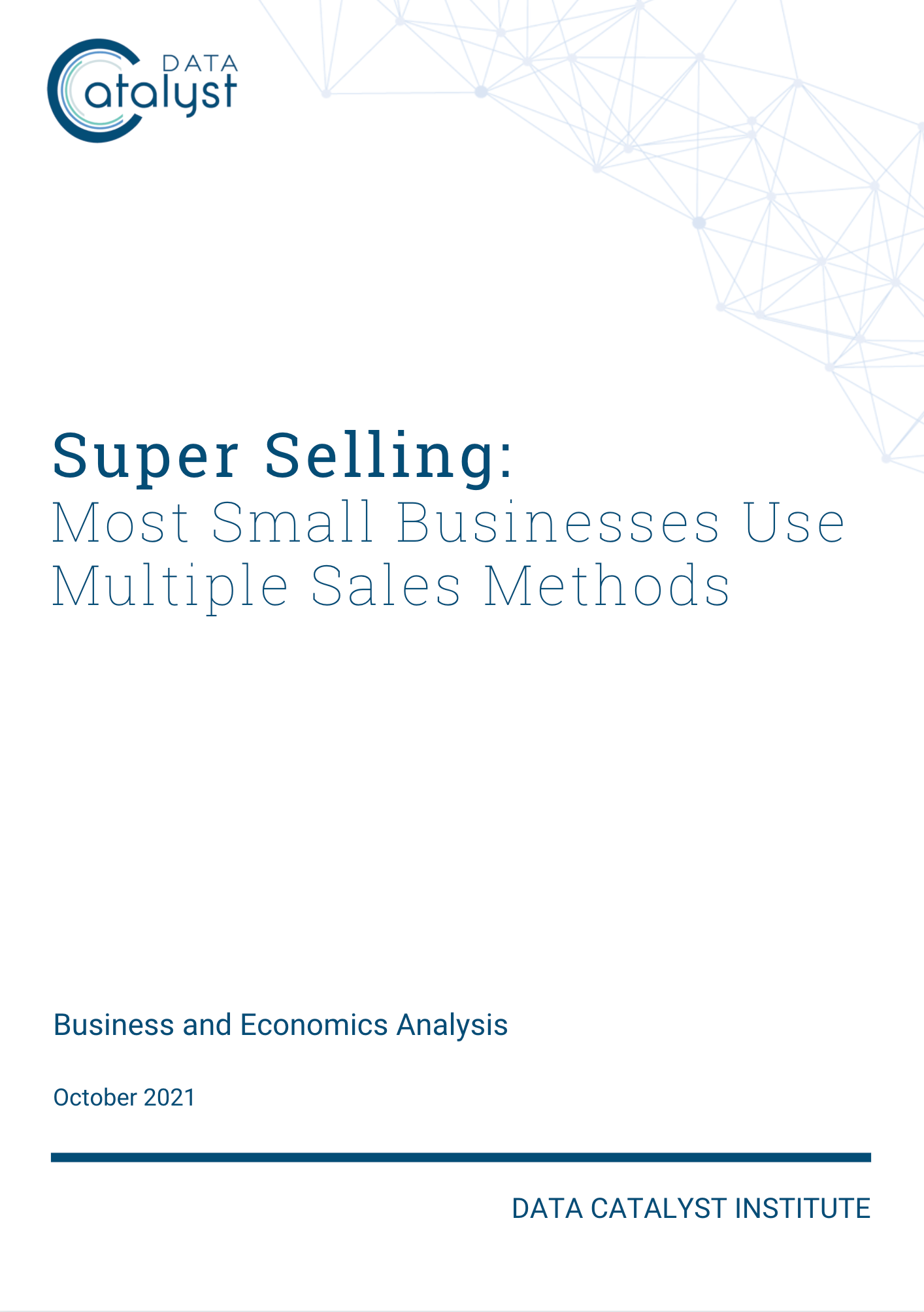
Super Selling: Most Small Businesses Use Multiple Sales Methods
October 2021
Several decades of public discourse have reduced common thinking about small business retail into simple and often binary axioms, e.g., suburban malls vs. downtowns and online vs. brick-and-mortar. We put those conclusions to the test in a new survey, and 2,000 small and medium-size (SMB) product sellers reported that today’s retail world is decidedly not simple, but rather dynamic, fluid, competitive, and full of opportunity. Our major findings include:
- Small business sellers have many methods of reaching consumers to choose from: online and offline, wholesale and retail, direct-to-consumer and selling through marketplaces. The evolution of traditional retail alongside the growth of digital selling has created an infinite variety of options and aggressive competition for sellers’ attention, investment and allegiance.
- The typical SMB seller today uses five (5) different methods of selling products to consumers. The four most popular ones include both traditional and modern sales methods. They are: “brick and mortar” physical retail stores (79% of SMBs use), wholesaling (78%), 3rd-party online marketplaces (68%), and a seller’s owned and operated web store (68%). On average, 72% of SMB revenue is driven by these four sales methods.
- Within sales methods, SMB sellers also frequently use more than one competitive vendor. Taking online marketplaces as an example, a whopping 87% of SMB sellers on Amazon’s online marketplaces also sell on at least one other online marketplace, including 54% also selling on Walmart’s marketplace, and 50% also selling on eBay. This overlap exists for all major online marketplaces (Walmart, eBay, Target, and Etsy).
- SMB sellers that use more methods are also far more optimistic about their businesses’ future. They project higher revenue this year vs. last year, and are more likely to believe their industry and the U.S. economy are in good or excellent shape.
SMB sellers experiment by making modest investments, e.g., pop-up retail, easy-to-build websites and easy-to-use – global and local – online marketplaces. Low costs and accessibility enable small sellers to add, subtract and move fluidly among competing retail platforms, channels and options. Every seller decides independently which methods work for their business, industry, product, and customer to justify additional investment and commitment.

Super Selling: Most Small Businesses Use Multiple Sales Methods
Data Catalyst Institute
October 2021